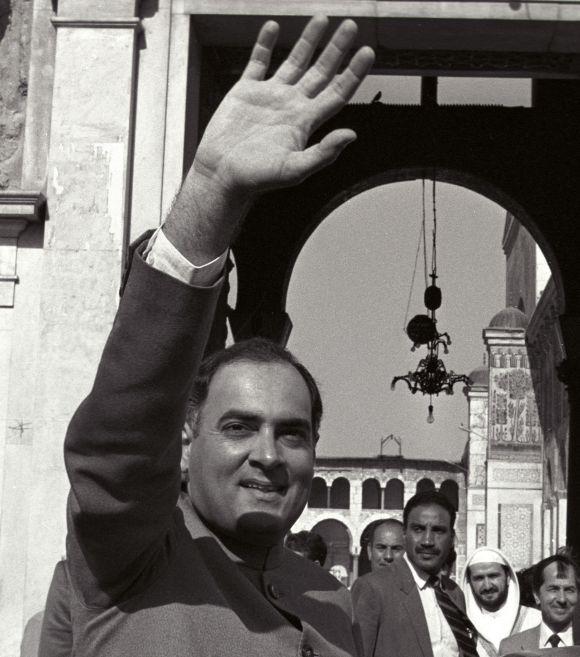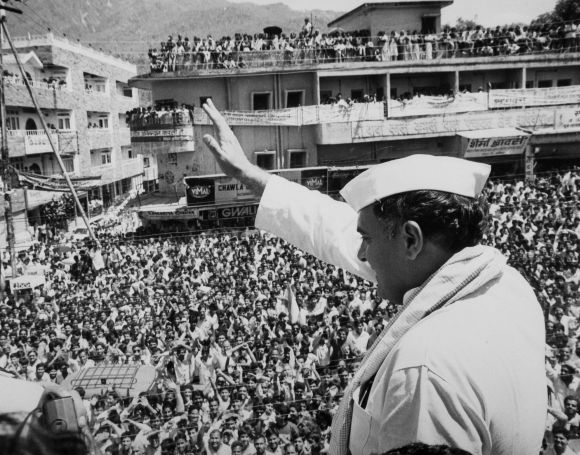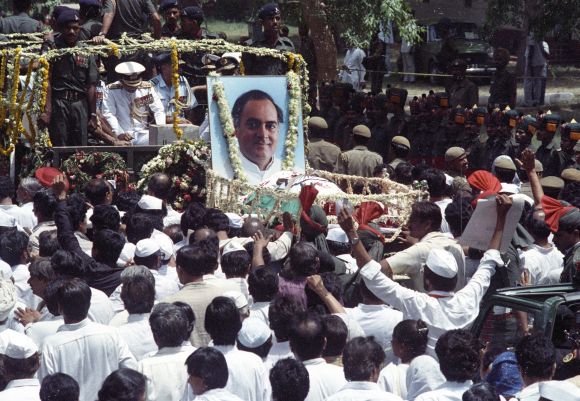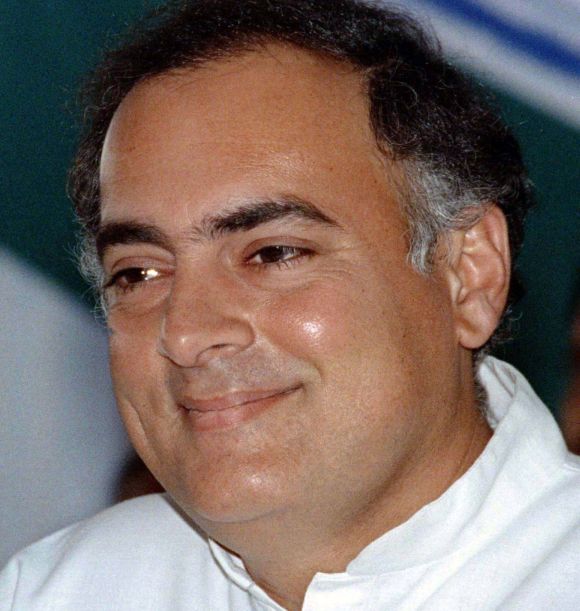
I Ramamohan Rao was working as the principal information officer of the government of India on the fateful night of May 21, 1991 when Rajiv Gandhi was assassinated at Sriperumbudur in Tamil Nadu. Rao was entrusted with the crucial task of announcing the news of Gandhi's death to the world in the absence of then prime minister Chandrashekhar from New Delhi. Rao recollects the happenings of that tense night.
Twenty one years ago today the country lost Rajiv Gandhi, the youngest person to have occupied the office of the prime minister. Rajiv Gandhi was assassinated by a Tamil militant suicide bomber at Siriperambudur in Tamil Nadu where he had gone to address an election meeting.
In Rajiv Gandhi's death, the country lost a leader who had ushered India into the twenty-first century, having authored the technological revolution, which has placed India ahead in the world.
I had the privilege of working as the principal information officer of the government of India when Rajiv Gandhi was the prime minister. He had taken up the office of the PM at the age of 40, and the circumstances in which he became prime minister following the assassination of his mother, Indira Gandhi, did not leave bitterness in him.
Please ...

The first step he took was to engage with opposition groups in the Punjab. The Punjab accord -- known as the Rajiv -Longowal Accord signed in July 1985 -- opened the road to peace in the state. It was followed by the Assam Accord announced on August 15, and the Mizo Accord, which was signed in June 1986.
He was keen that violence should end in Sri Lanka, and concluded an accord in the hope that Tamils would be able to live with peace and dignity in the island nation. But that was not to be.
Violence broke out in Sri Lanka with the Indian Peacekeeping Force forced to fight the Liberation Tigers of Tamil Eelam, and in India, the Rajiv Gandhi government was engulfed in the controversy over the Bofors gun deal.
His last two years in office saw a break being put on several initiatives that he had taken and his government lost power in 1989. He had hoped that in the mid-term elections in 1991, the Congress would be able to regain power.
Rajiv Gandhi had gone to Tamil Nadu to campaign for the Congress party in the 1991 Lok Sabha elections, which commenced on May 20. The elections became due as the Congress decided to withdraw support to the minority Chandrashekar government, which resigned on March 6. The Lok Sabha was dissolved on March 13.

On May 21, I received a call around 10.30 pm from the Secretary of the Power Ministry Vasudevan who had been a joint secretary in the Prime Minister's Office that he had heard of the assassination of Rajiv Gandhi near Chennai a little while ago.
I rang up the director of the Intelligence Bureau, who confirmed that there had been an attack on Rajiv Gandhi, but they were still getting details. I then got in touch with the Cabinet Secretary Naresh Chandra who confirmed that the worst was feared and that he was convening a meeting of the Core Group in his office.
I drove down to Rashtrapati Bhavan complex where the Cabinet Secretariat is located. The time was around 11.00 pm. The atmosphere was very grim. The director of the Intelligence Bureau, the secretary of the Research and Analysis Wing, the secretaries of the Home, Foreign and Information and Broadcasting Ministries were present. Cabinet Secretary Naresh Chandra confirmed the report of the assassination. The question before us was when to announce the report and what and how much to say.
Officially, Rajiv Gandhi was a Member of Parliament and a former prime minister. Who could have killed him? Rajiv Gandhi had adversaries in the Khalistani forces who were annoyed with him following the Black Thunder operations. He also had enemies among the LTTE for sending the Indian Peace Keeping Force to Sri Lanka. There was attempt on his life when he went to Sri Lanka to sign the agreement.
The IB was not sure of the identity of the suicide bomber, but suspected it to be a Sri Lankan militant owing allegiance to the LTTE. It could also be the handiwork of a Sikh terrorist, but it was unlikely that they would choose Tamil Nadu as the venue for the attempt.

Chandrashekar, who was the prime minister of a caretaker government, was away addressing election meetings in eastern India and was not expected to return to Delhi till next morning.
The discussion in the Core Group covered the arrangements to bring the body to Delhi, the impact of the event on the law and order situation and the new schedule for the rest of the Lok Sabha elections.
I suggested that we should immediately announce the fact of the assassination, and indicate that the ''needle of suspicion pointed to the involvement of a Sri Lankan militant group''.
The other suspect groups could have been Sikh terrorists and the experience of 1984 and the violence that followed the assassination of Prime Minister Indira Gandhi was still fresh in our minds. There was some discussion, and Naresh Chandra told me that Chandrashekar, being out of the capital, I should handle it as carefully as possible as certain decisions had been taken without his knowledge.
The announcement had to be made at the earliest before rumours could spread. I scheduled a briefing in the Press Information Bureau a little before midnight. It was a crowded briefing, with the national and international press being there in full strength.
Besides the announcement of the tragedy, I said that according to the information available, the needle of suspicion pointed to the involvement of a Sri Lankan militant group. The media grilled me as to the evidence available, but I responded by saying that nothing further could be said at that stage.
Most of the television channels abroad got the coverage from the Asian News International. Incidentally, my daughter Smita Prakash, who was a correspondent with the Television News Agency, had the opportunity to announce the story to the whole world.
Looking back, it was a wise decision to indicate the involvement of Sri Lankan militants in the assassination. There was sorrow, but it did not spark off internal disturbances. The All India Radio and the Doordarshan announced the death of Rajiv Gandhi in their midnight bulletins, but there were no follow up bulletins till 6 next morning.
As was the practice, the Doordarshan and AIR stations had shut down at midnight. The nation had to depend on the British Broadcasting Corporation and the CNN, who continued their telecasts the whole night.

The mortal remains of Rajiv Gandhi were brought to Delhi during the early hours of May 22. There were minor demonstrations in front of 10 Janpath, the residence of Rajiv Gandhi. From the PIB, we sent some officials to help the media, as many VIPs, including President R Venkataraman called on Sonia Gandhi.
I met Prime Minister Chandrasekhar as soon as he returned to the capital, cutting short his election tour. I reported to him about the announcement made by me during the night. I still remember the remark made by him. He said, "Mohanrao, the press is responsible for pushing Rajivji to take this risk which resulted in the tragedy."
The reason for the remark of Chandrasekhar was that during the previous week a number of statements were made by Rajiv Gandhi that the government was preventing him from meeting people with political motives.
Because of these statements, the security was made a little more flexible to enable Rajiv Gandhi to mix with the people during the election rallies.
Rajiv Gandhi had reached the Madras airport from Vishakapatnam around 7 pm on May 21. He reached Sriperembudur at 10 pm, garlanded the statue of Indira Gandhi and people came to garland him.
Among them was Dhanu, the human bomb, who blew herself, Rajiv Gandhi and 17 others up.
...